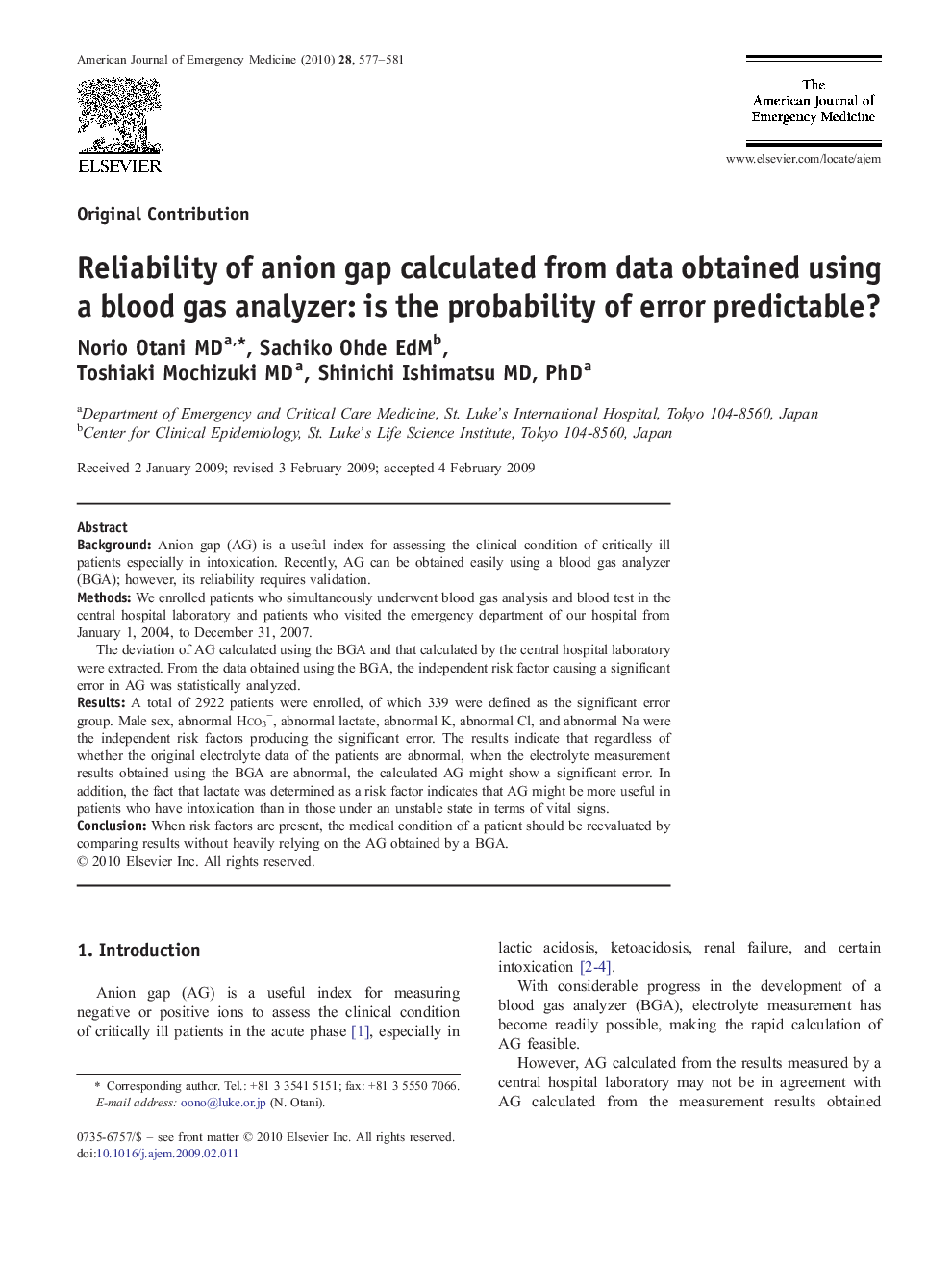| Article ID | Journal | Published Year | Pages | File Type |
|---|---|---|---|---|
| 3226616 | The American Journal of Emergency Medicine | 2010 | 5 Pages |
BackgroundAnion gap (AG) is a useful index for assessing the clinical condition of critically ill patients especially in intoxication. Recently, AG can be obtained easily using a blood gas analyzer (BGA); however, its reliability requires validation.MethodsWe enrolled patients who simultaneously underwent blood gas analysis and blood test in the central hospital laboratory and patients who visited the emergency department of our hospital from January 1, 2004, to December 31, 2007.The deviation of AG calculated using the BGA and that calculated by the central hospital laboratory were extracted. From the data obtained using the BGA, the independent risk factor causing a significant error in AG was statistically analyzed.ResultsA total of 2922 patients were enrolled, of which 339 were defined as the significant error group. Male sex, abnormal Hco3−, abnormal lactate, abnormal K, abnormal Cl, and abnormal Na were the independent risk factors producing the significant error. The results indicate that regardless of whether the original electrolyte data of the patients are abnormal, when the electrolyte measurement results obtained using the BGA are abnormal, the calculated AG might show a significant error. In addition, the fact that lactate was determined as a risk factor indicates that AG might be more useful in patients who have intoxication than in those under an unstable state in terms of vital signs.ConclusionWhen risk factors are present, the medical condition of a patient should be reevaluated by comparing results without heavily relying on the AG obtained by a BGA.
